The Mysteries of Angkor and Angkor Wat
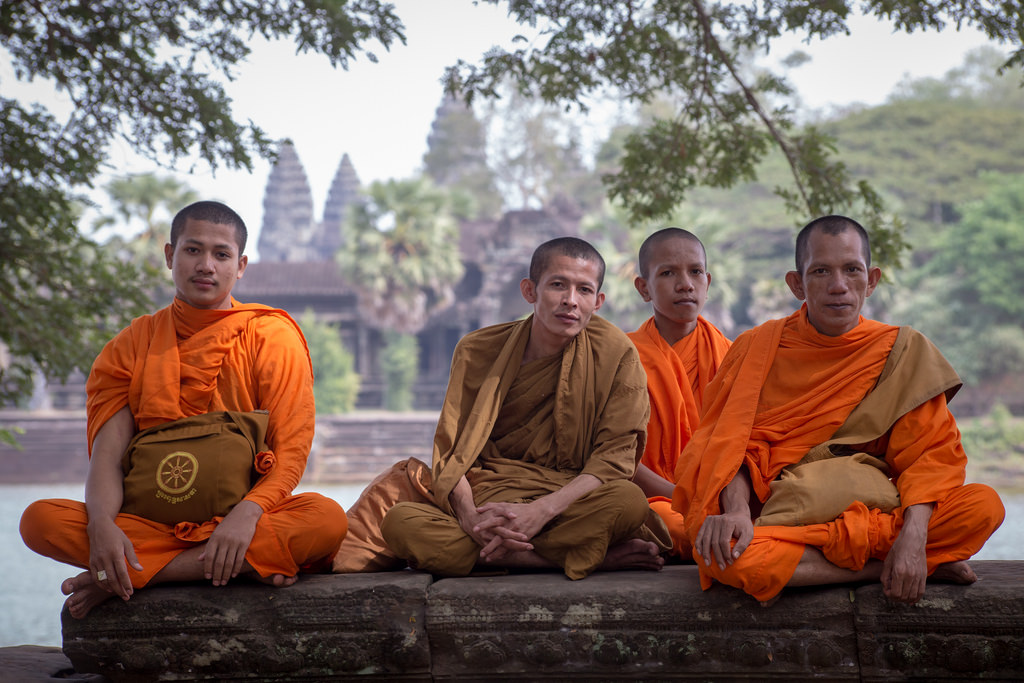
When I first learned of Angkor, it was through photos and stories of Angkor Wat. At the time I had no idea that Angkor Wat was only one small piece of a sprawling civilization and series of cities, temples, and developments that spanned the entire region. Angkor, the capital of the empire, includes a long list of sites including Angkor Banteay, Baray, Esvara, Gopura, Jaya, Phnom, Prasat, Preah, Srei, Ta, Thom, Varman, and Wat. In recent weeks announcements have come out that a number of other major temples, some of which are quite large, have been discovered in the surrounding region. As more exploration is done, it seems complex after complex from the mysterious Khmer Empire re-emerge from the the anonymity of the sands (and jungles) of time.
Though we don’t talk about it much in western histories, the Khmer Empire ruled the region for hundreds of years. Some historians suggest that the Angkor area was one of, if not the, largest pre-industrial urban area during that period. Interesting, timing and placing when an empire existed within our mental narrative is also something that is always incredibly difficult. I often think of the Mayan and Inca temples having been built around the same time as the pyramids (they were built 2,000 years apart). For me, Angkor was always the same. I picture it as early – perhaps even parallel to the Greeks or Romans. Yet, as it turns out, it’s actually closer to the Franks and Vikings and falls squarely within the Medieval Period.
Another of the big surprises for me was just how accessible Angkor is. The modern city of Siam Reap is situated on the border of the National Park and in some places the two nearly overlap. Which makes the commute from hotel to Angkor convenient and incredibly easy.
While I had visions of winding through barren dirt jungle roads to discover nearly untouched Temples, it turns out that’s not quite how it works. Tourism in the area has exploded in recent years, but the series of complexes is so large that it easily handles the load. The main temples are, however, all lined up on one or two routes normally classified as “green/red” or the “small/grand” circles. These are both useful for viewing the temples and for planning your day.
Chartering a tuk-tuk guide for the day is incredibly easy with every tuk-tuk driver ready, eager, and willing. Some will offer advice and guidance but that normally extends purely to routing and baseline history. The tuk-tuk drivers basically work as a chartered taxi. They’ll take you to the entrance to the National Park where you hop out and buy your admission ticket ($40 for 3 days in Dec. 2015) and then based on if you’ve paid them for the small or grand tour, will navigate through a combination of those temples at your pace. They park in front of the temple, you explore for as long as you want, then return and find them waiting for you ready to shuttle you to the next spot.
I used Mr. Narin (his website) who was excellent, had great advice, and was an experienced and safe driver. Rates are usually around $20 a day and vary depending on added services (sunrise/sunset, distant temples, etc.).
It is also possible to do it by yourself via bicycle or moped, however, it was great having a guide and navigating the temples based on his advice as he was able to offer specific feedback on when the crowds were lightest and key places to see. Given the size of Angkor and the fact you’re walking a lot of temples, in high heat, and up and down quite a few stairs…it’s well worth making sure you can relax and re-hydrate in between.
The photos in this post cover the primary temples in the central Angkor complex (if curious about a specific one, click in and read the description on the file). In total I did the small and grand circuits as well as the sunrise at Angkor followed by a trip out to Banteay Srei, the women’s temple. Based on Narin’s suggestion I arrived a little earlier than most, which allowed a good view of sunrise over the small lake in front of Angkor Wat.
Ideally, I’d have arrived another 10-15 minutes earlier to get a front-line spot at water’s edge to set up my tripod. Still, the timing was excellent as 20 minutes later a veritable sea of people piled in behind us. He also suggested after taking my shots that I rush back and that we’d then head directly to Ta Prohm, which is the temple made famous by Tomb Raider. This allowed me to spend a good 30 minutes as one of 5-10 people in the ruin complex, essentially with the whole place to myself, before the rest of the tourists started to arrive. As a photographer this was a dream come true.
Luckily, as mentioned earlier, even though Angkor has become a very popular destination, it still feels raw, mysterious and like a place that tickles your inner Indiana Jones. It’s still possible to spend time alone in many of the smaller temples and I didn’t run into or experience any issues with annoying children overly aggressively trying to sell me things, beggars, or guides.
The experience felt much more like Tikal, which is one of my all time favorites, than Chichen Itza, which was an experience utterly ruined by the weight of stabilization and convoy after convey of tourists.
In total I had 2.5 days to spend in the temples and had purchased a 3 day pass. By the end of the 2nd day I felt like I was starting to get a bit temple’d out. Because the temples span hundreds of years and a mixture of purposes you get to see and experience very different styles, artwork, colors and bricks which makes it quite interesting.
Ultimately though, just like a good museum, it’s important to know your threshold before you’ve had your fill. The two days were pretty much perfect for me and the drive out to Banteay Srei was a pleasant jaunt through the countryside which was, in truth, probably more enjoyable than the temple itself which is beautiful, delicate, but small and was somewhat underwhelming.
I ultimately did return for the morning of the 3rd day, but that was strictly due to spotting a large group of Buddhist monks setting up for a major event and celebration the afternoon before as we were leaving the park. Hoping that they’d still be there, I decided to take a gamble, and ran out to the park early that morning for a couple of hours before grabbing my gear and heading to my 1PM flight. Luckily, the gamble paid off, as more than 3,000 monks from all over the country had descended on the temple for a series of religious ceremonies.
This meant that the monks were out and about exploring and discovering Angkor, creating incredible photo opportunities, and allowing me to get a better understanding of just how different Buddhist monks are than how I’ve historically imagined them. They were smoking, on cell phones, relaxing and taking photos and there discovering part of their own culture and history.
In addition to having the chance to grab a few quintessential Angkor shots, I also got incredibly lucky and through asking to snap a photo was invited to join a group of monks relaxing in front of an old ruin. We chatted through the two that spoke English for a good 40 minutes, shared some snacks, and snapped a few photos before I had to bid them goodbye and run for the airport.
While I was surprised to discover that the floating markets and floating cities are not situated at the foot of Angkor Wat as has been depicted in some photos, Angkor was an incredible experience and is hands down one of the most magical places I’ve visited.
It remains accessible, intimate, raw, and yet is easy to navigate and fantastically compelling. The Cambodian people were lovely, friendly, welcoming, and wonderfully kind with a great warmth to them.
When you consider their history, it is astounding what they’ve gone through and accomplished in recent years. It is a wonderful thing to see them able to re-discover and embrace their history, culture and heritage.
Make sure to head to flickr to view my full albums from the visit. View my Angkor in Color and Angkor in Black and White albums which have select shots of the Monks in Angkor and then view the full Cambodia Album and Cambodia in Black and White which includes the majority of my photos from Angkor.
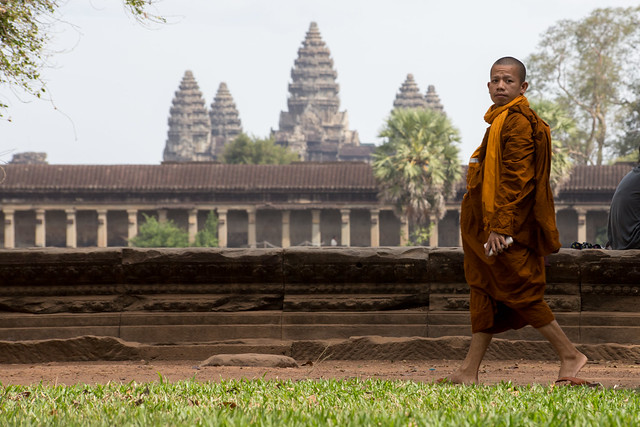
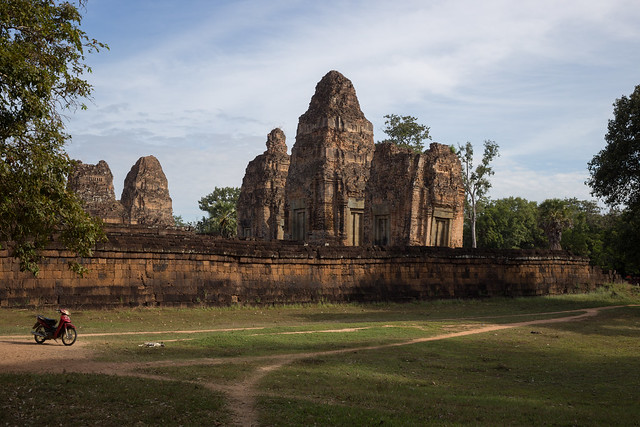
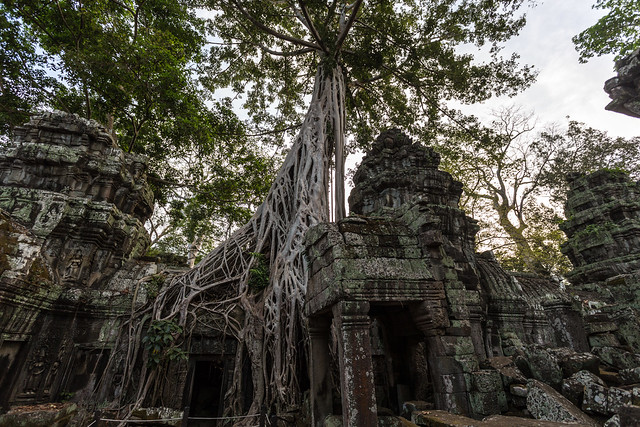
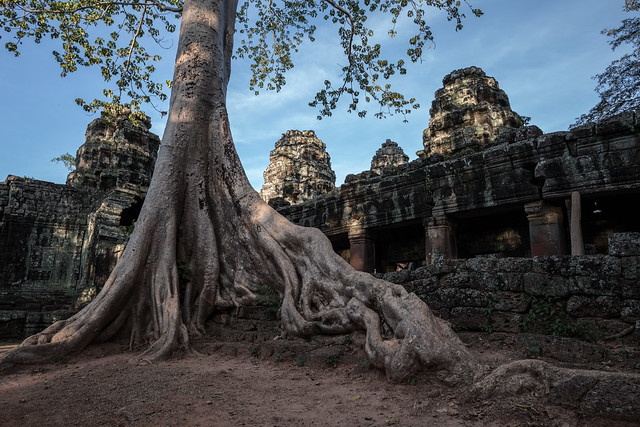
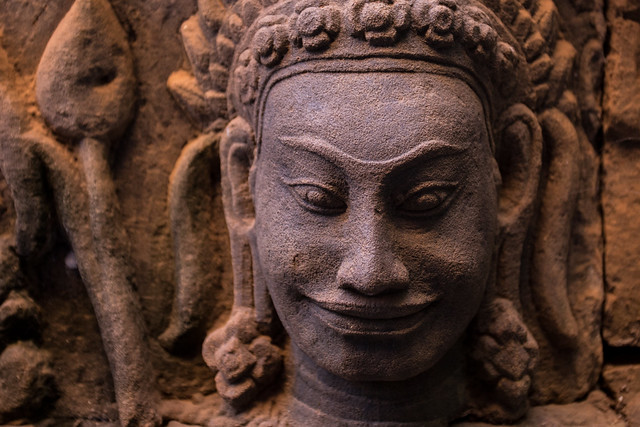
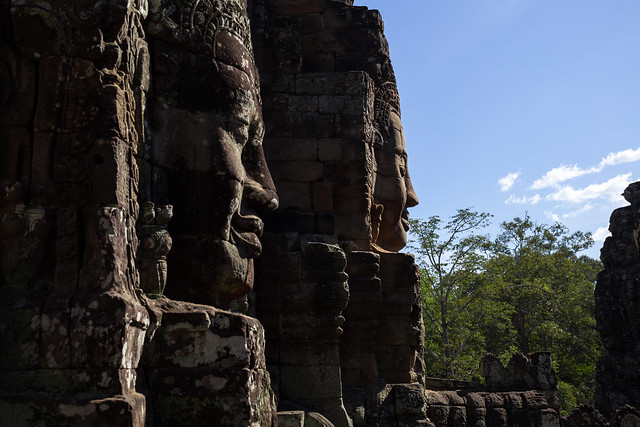
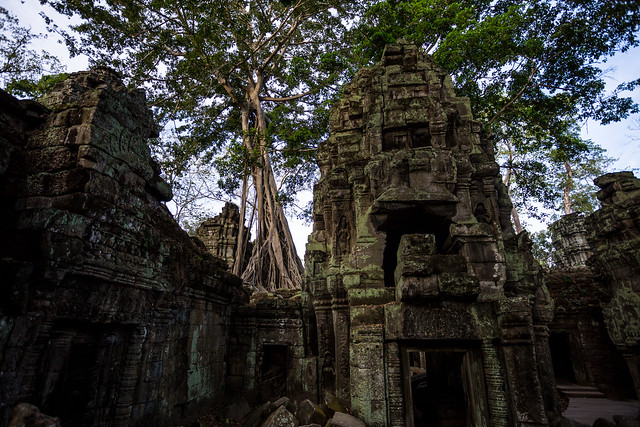
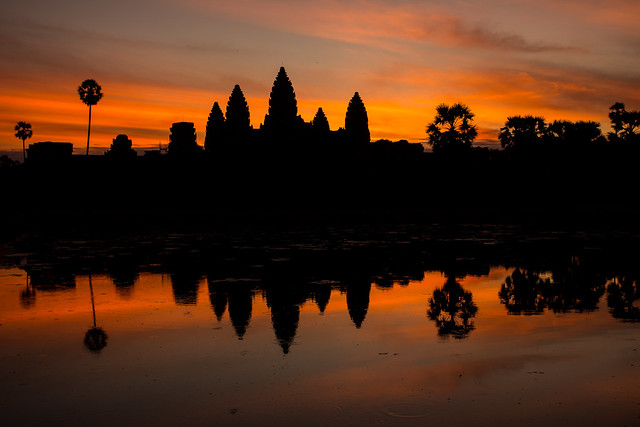
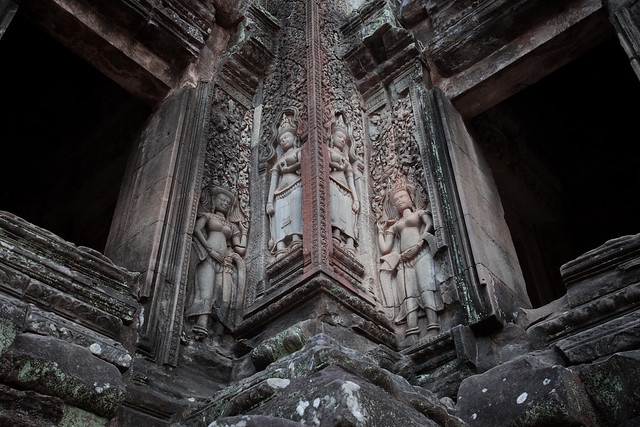
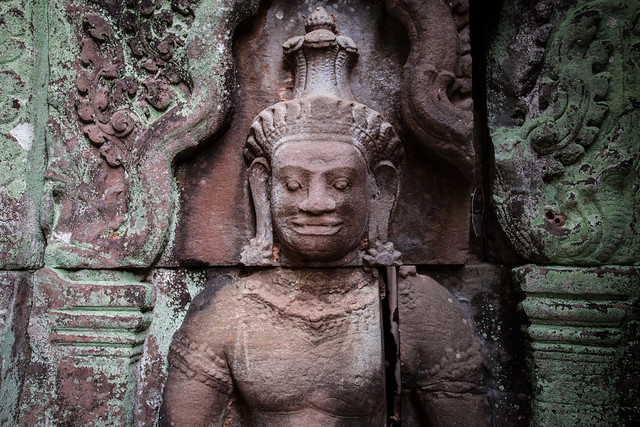
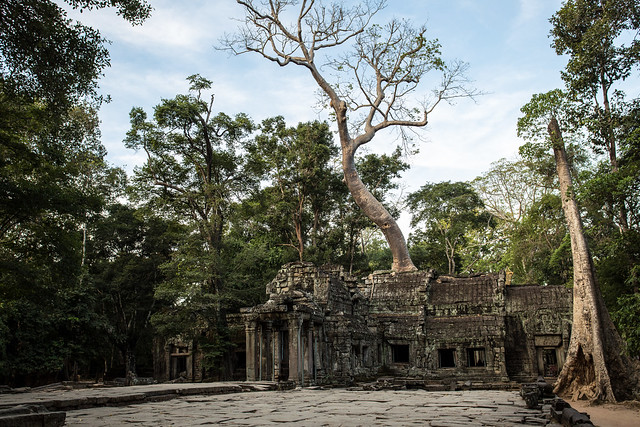
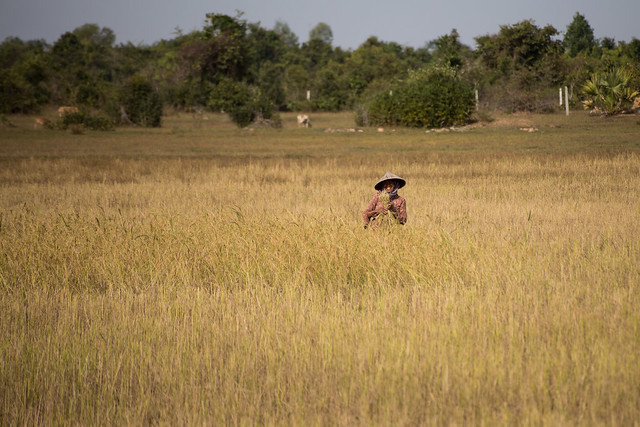
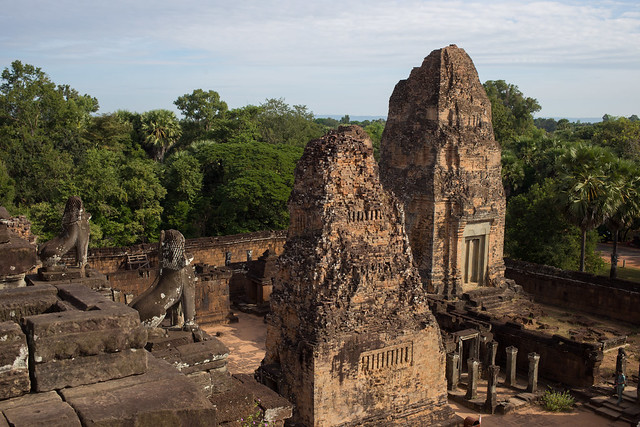
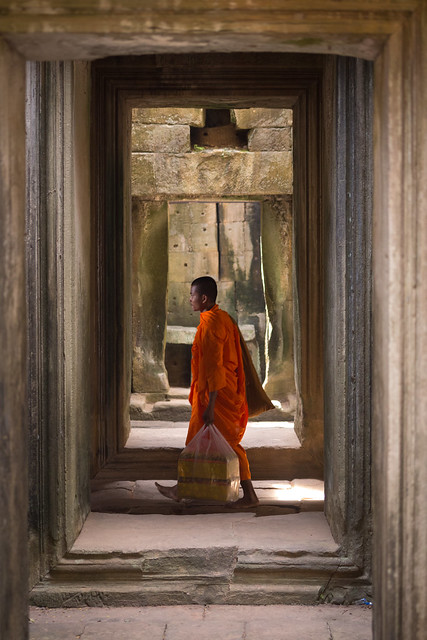
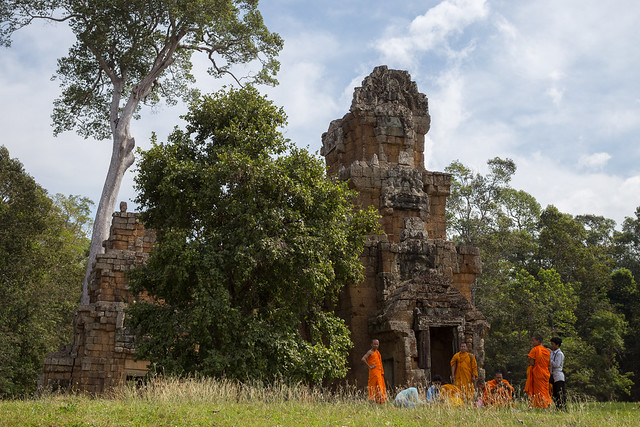
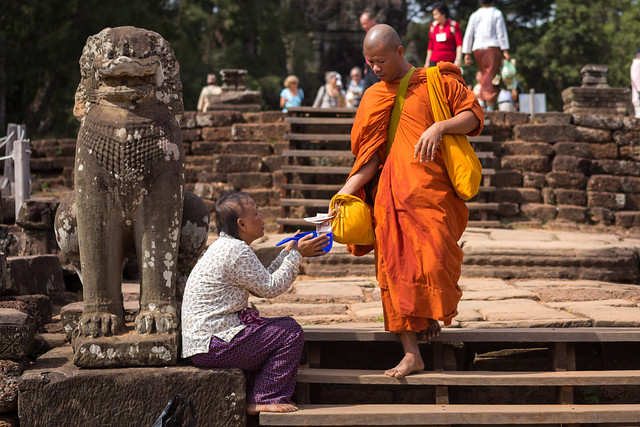
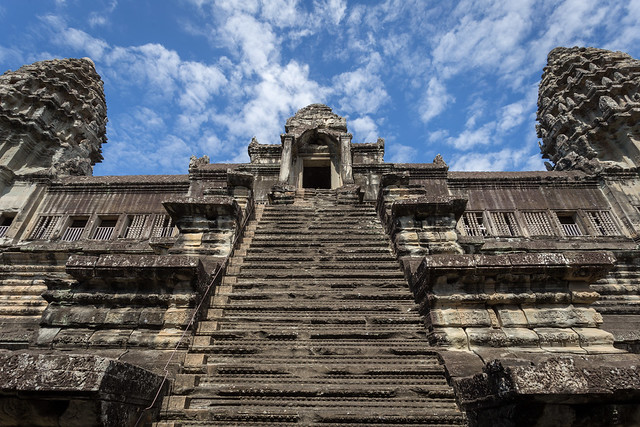
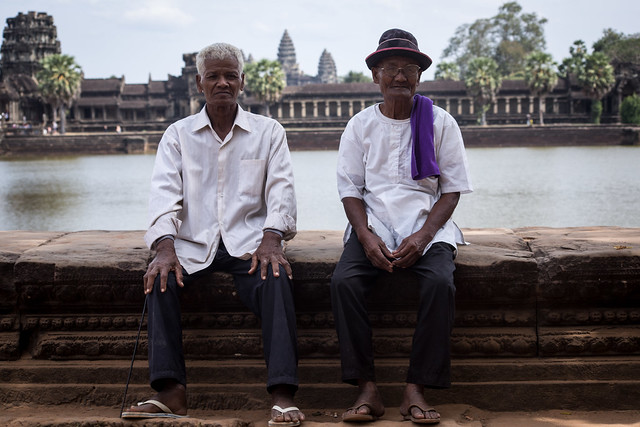

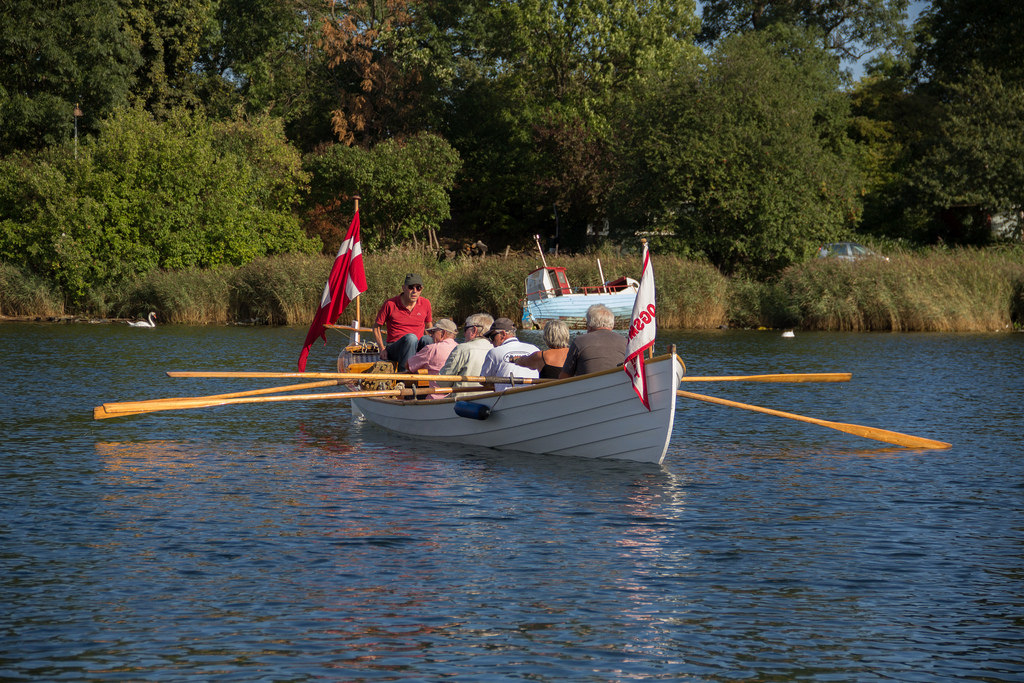
amazing pictures and beautifully design on temples that is great.
Thank you!
This is amazing! Such beautiful pictures you’ve included here. What an exciting and worthwhile adventure place this would be to visit. Thanks so much for sharing what you learned!
Thanks Morgan!